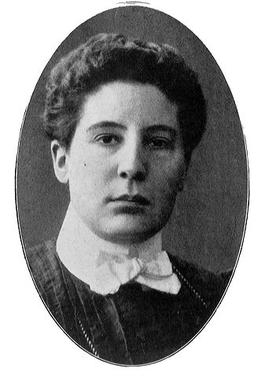Kirsten Leng
On October 21, 2018, the New York Times reported that the Trump administration was mulling a change to the federal definition of sex. According to the Times, changes to the language of Title IX, the U.S. federal policy introduced to combat gender discrimination within educational institutions, would consecrate the male-female binary as unchangeable and determined by the genitals apparent at birth. As many commentators immediately noted, the change would directly undermine civil rights protections for transgender people; however, the Department of Health and Human Services, which advocated the change, rationalized the move by claiming it was “grounded in science, objective and administrable.” Binary gender, they asserted, was biological.

The Trump administration is certainly not the first to use science to support a conservative gender ideology. Yet scientific insights on sex, gender, and sexuality are actually quite complicated. Biologically speaking, one’s sex is determined by a range of factors, including genitals, hormones, chromosomes, and reproductive organs. Moreover, science has not always underwritten conservative understandings of sex. At various points in history science has offered foundations for radical visions of sexual being and desire—including among feminists. Biology has in fact provided the seeds for undoing conservative gender politics.
A fruitful historical example can be found in early twentieth-century Germany, where sex, science, and feminism were remarkably intertwined. Germany, with its world-renowned universities and research institutions, medical experts, and burgeoning welfare state, was the birthplace of what came to be known as sexology, the “science” of sex. Scientific investigations into sex, gender, and sexuality were provoked, in large part, by women’s increasing presence in the public spheres of work and education. Meanwhile, radical wings of the German feminist movement challenged prevailing sexual norms as part of their efforts to gain greater rights within the public and private spheres. In the process, they broached an array of taboo topics including prostitution, single motherhood, female sexual desire, marriage, sexual education, and homosexuality. While scientists investigated the sexed body and its desires in their attempts to cope with changing social, political, and cultural conditions, feminists theorized these same subjects to challenge the sexual status quo. And science was a critical tool in their arsenal.
Take, for example, feminists’ explorations of same-sex desire, queer identity, and gender non-conformity. In the first decade of the twentieth century, German feminists mobilized contemporary scientific theories of homosexuality to reimagine the possibilities of womanhood. At that time, homosexuality was a hot topic for science, and researchers developed competing narratives to account for its existence. Some scientists, such as the British physician Havelock Ellis, maintained that homosexuality was the result of “sexual inversion.” This theory maintained that same-sex desire was attributable to “gender confusion”—that is, male homosexuality resulted from a “female soul trapped in a male body” (and female homosexuality, vice versa). Proceeding from this theory, scientists later argued that homosexual men and women actually constituted distinct sexes beyond the male and female. Eventually, researchers like the German doctor Magnus Hirschfeld maintained that sexuality and gender existed on a spectrum. The gender binary a fiction; all that existed, according to Hirschfeld, were “sexual intermediaries.”
Admittedly, these theories were sometimes put to anti-feminist ends: some argued that feminists, by virtue of their “mannish” desires for work, education, and political power, were members of a “third sex” and thus disqualified from true womanhood. Yet all of the theories detailed above provided essential fodder for feminists’ rethinking of gender and sexuality and their demands for expanded rights and freedoms. Even more remarkably, these scientific theories inspired a plurality of gender and sexual alternatives authored by very different women.

One-time anarchist and future right-wing nationalist Anna Rüling was among the first to put forward a vision of a same-sex desiring woman who was innately masculine yet “noble and fine.” In a 1904 speech to feminists and gay activists, Rüling—one of the few publicly “out” women of her generation—argued that lesbians were intellectually and spiritually male, with greater aptitudes for “male” pursuits such as science, medicine, and law. She thus concluded that they constituted a distinct sex apart from man and woman. That same year, the socialist and suffragist Johanna Elberskirchen published a series of texts in which she also engaged scientific theories of homosexuality but arrived at a radically different conclusion. For Elberskirchen, who was also “out” at the time, same-sex desiring women were the most feminine beings. As Elberskirchen pointedly asked, what was masculine about a woman who desired other women? While Elberskirchen accepted that lesbians may constitute a third sex, they were a decidedly feminine one that ought to be spared the requirements of compulsory heterosexuality.
Finally, in 1905, the Austrian philosopher Rosa Mayreder took up the concept of sexual intermediaries to craft an ideal she called the “synthetic human.” The “synthetic human” was radically individualistic: it exceeded the strictures of femininity and masculinity yet incorporated elements from across the spectrum. For Mayreder, the synthetic human embodied the full spectrum of human traits and capacities. Although Mayreder favoured maintaining an appearance of binary gender, she insisted that one’s appearance was not a reflection of any essential quality, nor did it impose limits on what a person could be.
Rüling, Elberskirchen, and Mayreder all connected their radical reinterpretations of womanhood to demands for greater rights and freedoms for women and sexual minorities. Admittedly, some of these moves were conservative: Rüling for one argued that lesbians deserved greater rights by virtue of their greater masculinity, and in so doing appealed to patriarchy rather than undermining it. Elberskirchen demanded independence from men and greater social powers for women while asserting the superiority of queer women. While Rosa Mayreder believed that only a few remarkable individuals embodied the “synthetic human” in her own time, she nonetheless believed it represented the fate of the species, and would totally revolutionize the existing sexual order.
In all three cases, science was not inimical to feminism: to the contrary, it proved a crucial part of feminists’ efforts to author a radical gender politics. This is true despite attempts to deploy these same knowledges to anti-feminist ends. What this history teaches us is that science does not have a singular message when it comes to sex and gender—and that its message is not necessarily conservative. In light of this history, concerned citizens should not acquiesce to conservative assertions about science: rather, they should actively engage science as a resource for radically rethinking gender and sexuality and the new social order they promise.
Kirsten Leng is Assistant Professor in the Department of Women, Gender, Sexuality Studies at the University of Massachusetts Amherst, and the author of Sexual Politics and Feminist Science: Women Sexologists in Germany, 1900-1933 (Cornell University Press, 2018). Her areas of interest include the history of gender, sexuality, and feminism; feminist and critical theory; the history of sexual knowledge and formation of sexual subjectivities; and the rhetorics of political claims-making and legitimation. Her published work examines the gender politics involved in the creation of sexual scientific knowledge in the early twentieth century, focusing on developments emerging from turn-of-the-century Berlin and Vienna. Currently, she is researching a history of humor in twentieth-century feminism.

NOTCHES: (re)marks on the history of sexuality is licensed under a Creative Commons Attribution-NonCommercial-NoDerivatives 4.0 International License.
Based on a work at www.notchesblog.com.
For permission to publish any NOTCHES post in whole or in part please contact the editors at NotchesBlog@gmail.com





The sooner we get rid of this man the better for our country and the world at large. It’s not just that he makes us and our political system a laughing stock in the minds of the rest of the world, he is evil and dangerous. We’ve had dumb presidents and we’ve had right wing ones, but he is uniquely deplorable. That may well be his one claim to fame in our historical memory. Let us hope so!